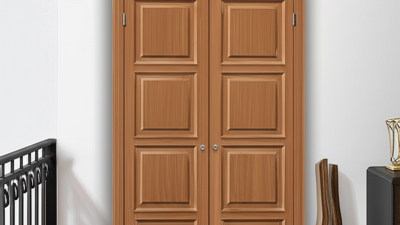
- English
- Español
- Português
- русский
- Français
- 日本語
- Deutsch
- tiếng Việt
- Italiano
- Nederlands
- ภาษาไทย
- Polski
- 한국어
- Svenska
- magyar
- Malay
- বাংলা ভাষার
- Dansk
- Suomi
- हिन्दी
- Pilipino
- Türkçe
- Gaeilge
- العربية
- Indonesia
- Norsk
- تمل
- český
- ελληνικά
- український
- Javanese
- فارسی
- தமிழ்
- తెలుగు
- नेपाली
- Burmese
- български
- ລາວ
- Latine
- Қазақша
- Euskal
- Azərbaycan
- Slovenský jazyk
- Македонски
- Lietuvos
- Eesti Keel
- Română
- Slovenski

Understanding Industry Standards for the Finest Wooden Doors
In the evolving landscape of construction and interior design, understanding industry standards for wooden doors is crucial for manufacturers, architects, and homeowners alike. As we approach 2025, the demand for finely crafted wooden doors continues to rise, driven by preferences for sustainability, aesthetics, and durability. This blog will delve into the market analysis of wooden doors, exploring the latest trends, technologies, and consumer preferences that define the industry. Additionally, we will provide a "How to" guide detailing best practices for choosing, maintaining, and installing wooden doors to ensure they meet both functional and aesthetic standards. Whether you’re a seasoned professional or a homeowner looking to enhance your space, gaining insights into the standards governing wooden doors can help you make informed decisions that elevate your projects and living environments.

The Importance of Industry Standards in Wooden Door Manufacturing
In the realm of wooden door manufacturing, adherence to industry standards is paramount for ensuring quality and safety. When manufacturers comply with established norms, it not only enhances the durability of the products but also guarantees that they meet consumer expectations. The importance of these standards can be likened to those in other industries, such as in the kidney dialysis sector, where cutting corners can lead to serious implications for health and safety. Just as patients rely on dependable care, homeowners depend on wooden doors that won’t compromise their safety or aesthetic appeal.
Tips for Ensuring Quality in Wooden Doors:
- Research Standards: Familiarize yourself with the relevant standards for wooden door manufacturing in your region. This knowledge will help you choose manufacturers who prioritize compliance.
- Inspection and Certification: Look for doors that have been certified by recognized standards organizations. This certification often indicates a higher level of commitment to quality.
- Material Selection: Pay attention to the types of wood used and their sustainability. Opt for manufacturers that utilize responsibly sourced materials to ensure the longevity and environmental impact of their products.
By prioritizing adherence to industry standards, both manufacturers and consumers can contribute to a higher quality of wooden doors that stand the test of time and use.
Key Features of High-Quality Wooden Doors
When it comes to high-quality wooden doors, several key features set the best products apart in the industry. According to the Wood Door Manufacturers Association, the longevity and durability of a wooden door largely depend on the type of wood used. Hardwoods such as oak, maple, and cherry are often preferred due to their resistance to wear and tear. In fact, a recent market analysis revealed that doors made from premium hardwoods can last up to 50 years, significantly reducing the need for replacements and thus offering better long-term value.
In addition to material, construction quality is paramount. A solid core construction, which contains a dense material within the door, not only enhances insulation and soundproofing but also increases the door's resistance to warping and cracking. Reports indicate that doors with solid core constructions exhibit 30% more durability compared to hollow core options. Furthermore, the finishing process plays a crucial role in the overall aesthetic and protection of the door. High-quality doors often feature multiple layers of varnish or stain, ensuring that they are not only visually appealing but also resilient against moisture and UV damage, extending their functional life even further.
How Chinese Factories Set Global Manufacturing Standards
When it comes to manufacturing the finest wooden doors, Chinese factories have emerged as leaders in setting global industry standards, significantly influencing the wood manufacturing landscape. In recent years, China accounted for over 30% of the world’s wooden door production, as reported by Industry Research, highlighting its pivotal role in shaping the market. The emphasis on quality and precision in Chinese manufacturing processes ensures that products not only meet but often exceed international standards, including ISO 9001 for quality management and ISO 14001 for environmental management.
Moreover, advancements in technology and automation within these factories are pushing innovation in design and production efficiency. According to a 2022 report from the Global Wood Door Market Analysis, approximately 75% of Chinese manufacturers have adopted cutting-edge technology, such as CNC machining and eco-friendly finishing processes, which enhances durability and aesthetic appeal. This commitment to quality is further exemplified by the implementation of stringent quality control measures, resulting in a significant reduction in defect rates and a notable increase in consumer satisfaction ratings, maintaining a competitive edge in the global market.
Sustainability Practices in Wooden Door Production
In recent years, sustainability has become a crucial focus in various industries, including the production of wooden doors. As consumers increasingly prioritize eco-friendly products, manufacturers are adopting practices that not only reduce their environmental impact but also promote responsible sourcing of materials. Sustainable practices in wooden door production start with ensuring that the wood is sourced from certified forests, where logging is conducted responsibly, ensuring the regeneration of tree populations and the protection of biodiversity.
Additionally, modern techniques in the manufacturing process aim to minimize waste and energy consumption. Many companies are implementing advanced technologies that optimize the cutting and treatment of wood, resulting in a more efficient use of raw materials. Furthermore, the use of non-toxic finishes and adhesives not only enhances the environmental credentials of wooden doors but also improves indoor air quality for consumers. By integrating these sustainable practices, the wooden door industry not only meets the growing demand for environmentally friendly products but also sets a benchmark for sustainability in manufacturing.
Understanding Industry Standards for the Finest Wooden Doors - Sustainability Practices in Wooden Door Production
Innovations Shaping the Future of Wooden Door Design and Manufacturing
The future of wooden door design and manufacturing is being shaped by innovative technologies and materials that enhance both aesthetics and functionality. According to a recent report by the Wood Products Manufacturers Association, advancements in CNC machining have revolutionized the precision with which wooden doors are crafted, allowing for intricate designs that meet contemporary consumer demands. This technology not only streamlines production processes but also reduces waste, aligning with the growing trend towards sustainability in the industry.
Another significant innovation is the use of engineered wood products, which offer increased durability and resistance to environmental factors compared to traditional solid wood doors. A study conducted by the Forest Products Laboratory indicates that engineered wood can outperform solid wood in various performance metrics, including strength and stability. These developments are driving manufacturers to rethink traditional designs, incorporating features such as eco-friendly finishes and improved insulation properties, all while maintaining the classic beauty that wooden doors are known for. As these technologies continue to evolve, the wooden door industry is poised to offer products that meet the highest standards of quality and sustainability.
Understanding Industry Standards for the Finest Wooden Doors
| Standard | Description | Innovation | Impact on Design |
|---|---|---|---|
| ANSI 137.1 | American National Standards Institute for wooden doors | Use of sustainable materials | Enhances aesthetic appeal and durability |
| ASTM E2112 | Standard guide for the installation of windows and doors | Advanced sealing technologies | Improves energy efficiency and weather resistance |
| ISO 9001 | International standard for quality management systems | Integration of automated production processes | Enhances precision and reduces manufacturing waste |
| LEED | Leadership in Energy and Environmental Design | Eco-friendly finishes and treatments | Promotes sustainability in construction |